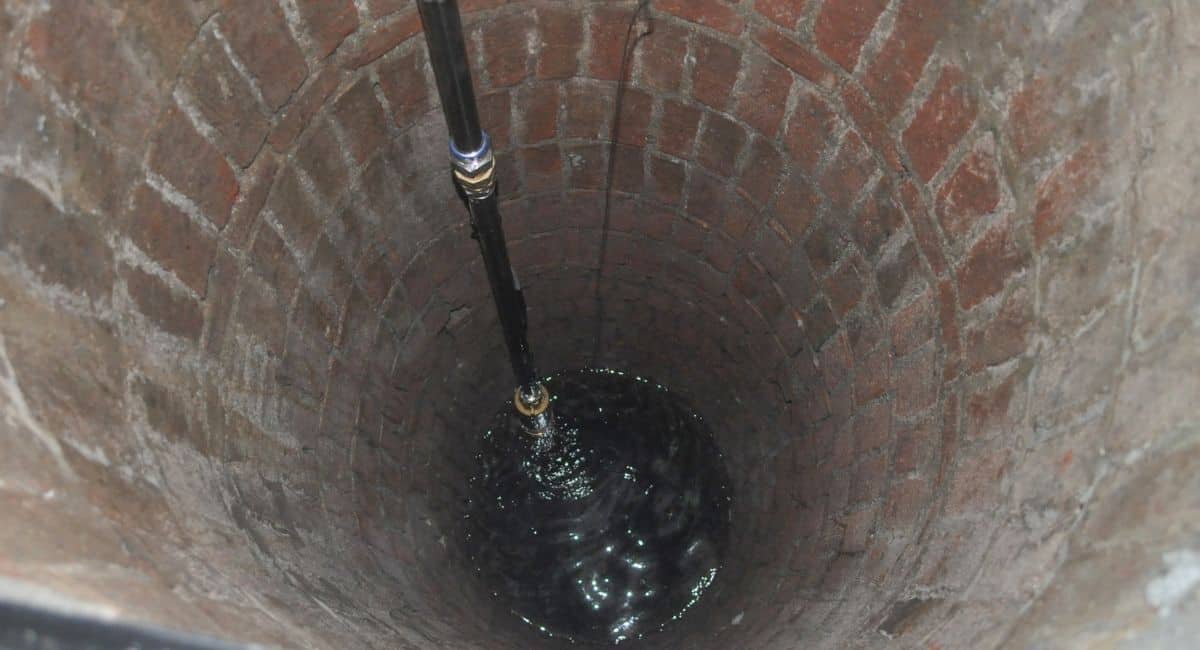We like to share product recommendations with you and hope you like them! Just to make you aware Water Filter Data may collect a small share of sales or other compensation from the links on this page.
Ever wonder who invented the well and how someone came up with the idea of well water?
The earliest well water can be traced back to at least 8000 years ago in Israel, India, and China. In India, people mostly used step-wells, where they dug and formed large holes and lined them up with stones to form steps.
During the Neolithic era in China, people dug the holes by hand and put long logs along the sides to form stairs chasing top to bottom.
Woodlingdean is the oldest hand-dug water well known and present in Brighton, East Sussex. The depth of the well is 1285 feet, which is as tall as the empire state building!

What Is Well, Water Table, and Groundwater?
A well is an opening that runs deep into the ground in order to utilize underground water. It uses a pump to bring water to the surface through a pipe.
As for water table, there are several layers of sand, soil, rock, and different sediments beneath the earth. As you dig, you will come across a layer of water. This is referred to as the water table.
The earth under the water table is saturated with water, which is referred to as groundwater. The level of the water table varies according to the level of groundwater.
The percentage of groundwater changes depending on numerous factors, including the weather, number of rainfall, and others.
How Does a Well Work?
When you look under the surface of the landscape, you will see a unique combination of pebbles, sand, or fine sand material that forms regions where water might be held in pores.
Rainwater or melted snow falls into the empty gaps between the soil or fractures in the rock as a result of gravity. The water eventually gets to the saturated zone.
All of the vacant areas in the saturated zone are then filled with water. This water is known as groundwater.
A well is nothing more than a vertical hole in the earth that completely covers the water table and then into the zone of saturation. Water from the nearby aquifer supplies the vertical well, from which the water can be pumped.
Water from the surrounding aquifer leaks back into the well borehole when it gets pressure to push out water.
To prevent polluted surface water from contaminants, modern wells include a type of casing or pipe in the hole that is grouted and sealed at the surface and continues above the ground surface.
Aquifers
The majority of wells derive their water from aquifers rather than subsurface streams. Aquifers are layers of rock and soil in which water flows via tiny holes.
In general, there are no massive cracks beneath the earth’s surface with turbulent flowing water. Instead, groundwater levels trickle slowly through the small gaps inside rocks, through rocks, and between free elements like sand and rock.
How Wells Started
By the mid-twentieth century, rotational boring innovation became standard after the development of the roller cone boring apparatus in 1908 by Howard Hughes Sr. Hughes’ creation.
The 1940s brought the development of convenient boring instruments up to that point they were all stage-based. Furthermore, that carries us to the innovation that is being used today.

Is Well Water Safe to Drink?
In some cases, well water is still not safe to drink because of its hardness or presence of chemicals. Hardness in water is dangerous to one’s health if used as drinking water. However, because of its high mineral concentration, it does have certain advantages.
Hard water also decreases the solubility of potentially hazardous metal ions. Hard water, on the other hand, causes pipe and container damage in both home and industrial applications.
Hard water problems include stains on dishes, soap scum, clogged pipes in the shower or bathtub, garments that are still dull after washing, and huge amounts of particles at the bottom of equipment such as faucets and water heaters.
If you really want to increase the lifespan of your plumbing and appliances, you should invest in a Water Softener Treatment.
Conclusion
Luckily, the present day well system has evolved since the old pulling up the pail days! A well is basically an upward opening in the ground that reaches out past the water table and into the soaked zone.
Water from the encompassing spring fills in the upward opening which can be siphoned. As water is siphoned out, water from the encompassing spring leaks once more into the well borehole.



